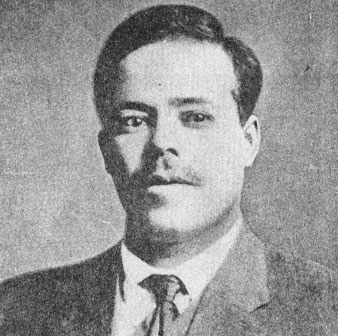100 years ago, after Pancho Villa had defeated the federal troops at Torreon he headed to Chihuahua. The capital of this important northern state remained a federal stronghold. The federal troops under General Mercado prepared for the worst as news of Villa's approaching rebel army trickled in. On November 5, 1913 Villa ordered a frontal attack against the numerically inferior defenders. Like in Torreon wave after wave of cavalry challenged the entrenched defensive lines of General Salvador Mercado’s federal force and Pascual Orozco’s irregulars. Emil Holmdahl’s artillery was charged with “softening” defensive lines. However, Mercado was ready. He had studied Villa’s crude method of attack. Owing to the federals’ superior artillery, which Mercado had strategically placed for maximum effect and the deadly machine gun implements along the defensive line, the frontal assaults turned into bloodbaths for the attackers. After three days of heavy losses Villa stood to lose the battle. He ordered a pullback which caused General Mercado to report to Mexico City: “I have the honor to report to you that yesterday [November 8th] at 6 p.m., the enemy was expelled from his last positions and thrown back by our courageous troops…” Villa seemed to waver as to what to do next. To the defenders of Chihuahua he seemed to have broken off the attacks.
However, on November 11, 1913 small skirmishes resumed leading Mercado to anticipate a renewed assault on the city. Faking a new attack, Villa divided his forces and in the night of November 13 captured two coal trains at the Terrazas Station between Chihuahua and Juarez. He had the rail cars emptied and loaded an elite corps he called Dorados onto the trains. Further cavalry regiments followed at some distance as the Villistas moved north towards Ciudad Juarez. At each train station on the way, the rebels arrested the telegraph operators. Under the threat of death, they had to send fake messages to the garrison in Juarez. The telegrams pretended that Villa had cut the rail lines to the south and that the operators needed urgent instructions on where to direct the threatened trains. As expected the officials at Juarez ordered the operators to retreat north, thus clearing the way for the Villistas to approach Juarez without arousing suspicion.
In the early morning hours of November 16 the trains pulled into the downtown of Ciudad Juarez. When the rail car doors flew open at 2:30 in the morning and Villa’s cavalry charged the unsuspecting federal garrison the battle ended almost before it had started. Disoriented by attacking forces from inside the city as well as from the outskirts, the federals did not stand a chance. With only a few stray bullets pitting some walls and breaking some windows in El Paso without serious bloodshed, and by complete surprise Villa took Juarez, the jewel customs station for badly needed supplies from the United States. By 8:00am mop-up operations in the city were replaced by summary executions of federal officers, which lasted for the better part of a week. To the disgust of the national media in the U.S. and to the horror of the State Department Villa openly rounded up approximately 125 military prisoners, many of them Orozquistas, and had them shot without mercy. Not all El Pasoans joined in the abhorred outcry for humanity on the part of Villa’s troops. “Great numbers of morbidly curious El Pasoans, including some well-dressed women, flocked to Juarez to gawk at the dead bodies, and if lucky they got to witness an execution or two.” One high-ranking officer was allowed to flee to safety in the United States: The federal commander, General Francisco Castro. Villa had not forgotten that this officer interceded on his behalf when he himself faced a firing squad ordered by Victoriano Huerta to execute him. The caudillo general had overnight become a sensation in the American psyche.
Pancho Villa as depicted in the El Paso newspapers the next day, well dressed, shaven, cultured ... American.

